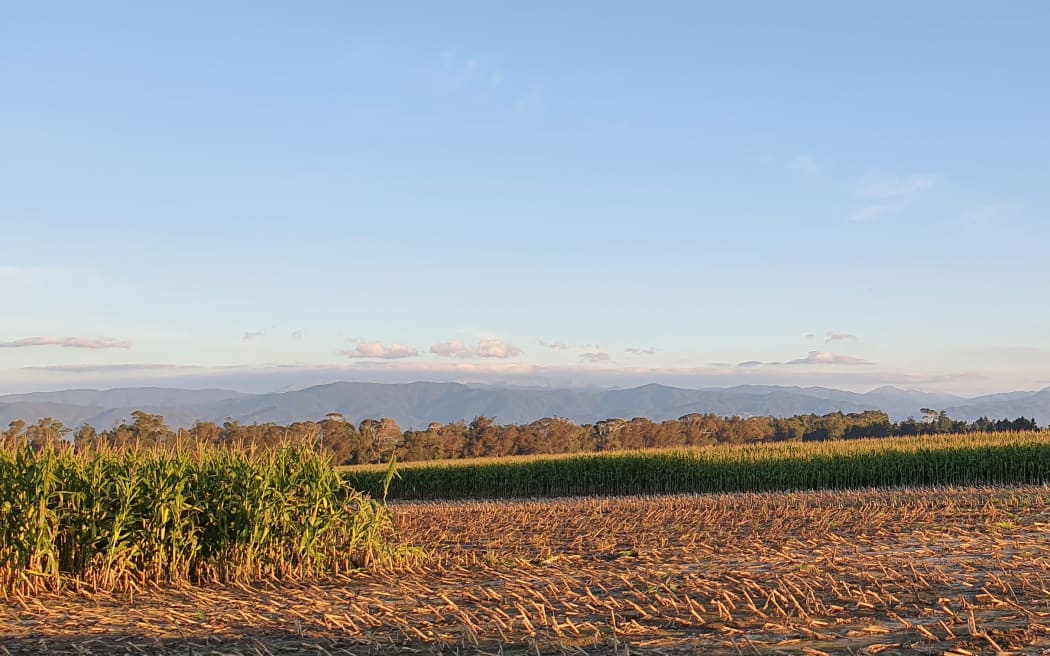Maize growers are being warned they need to switch up their methods or face smaller yields as the effects of climate change creates more extreme weather.

(File photo) A maize crop at harvest time. Photo: RNZ/Sally Round
July was one of the warmest and wettest on record across the motu, with five separate weather events causing flooding, NIWA said.
Foundation for Arable Research senior researcher David Densley said maize growers should consider adapting production systems to be more resilient to weather.
Though maize typically did well in warmer climates, evapotranspiration rates increased as soil temperatures went up, meaning a plant needed more water simply to maintain itself.
"Some of the modelling work we've done has shown that this last season in the Waikato, for example, we needed another 52mm of water, just to achieve the same thing.
"The impact of warmer and dryer temperatures during the growing period is that we need more water to be able to produce the same thing, otherwise drought occurs and impacts the maize."
During the critical grain fill period, estimated maize yield loss when drought stress persisted for four or more consecutive days was around 3 percent to 9 percent yield loss per day of stress.
Growers should consider using no till or strip till to prepare and plant maize crops, rather than turning the soil over using conventional cultivation, Densley said.
That at may result in higher one-off costs, but would pay off in the long term.
"Thinking about, how do I carry more of this rainfall that I'm getting, in the winter and the spring, how do I carry that through into the summer when I'm going to need it most?
"The maize water demands peak over flowering, which is typically in January, which is typically the hottest, driest period, so carrying that water through so it doesn't impact our maize yield and our maize quality."
As well as using no till or strip till methods, an increasing number of growers were utilising cover crops and catch crops over winter, including nitrogen-fixing legumes to reduce nitrogen inputs, he said.
Farmers were applying variable rate lime, and using variable rate seeding rates for plant population, as well as deep soil sampling for nitrogen to better match inputs with productivity.
"About 10 to 20 farmers are managing their crops at this level for maize production, so blanket applications remain the norm."
Densley recommended all farmers adopt pre-side-dress deep N sampling, which does not require precision agriculture technology.
The cost of carrying out the sampling, which measures plant available soil nitrogen levels to a depth of 60cm, was more than covered by savings in applied nitrogen and also provided environmental gains with reductions in nitrogen loss and greenhouse gas emissions, he said.
He suggested farmers trial deep N sampling to gain some trust and apply side dress nitrogen based on the results.

